
Advice to improve your movement, fitness, and overall health from the #1 in orthopedics in the U.S.
The Best Bite-Size Workouts When You Only Have 20 Minutes
HSS suggests three short routines that can help you squeeze in a quick workout before getting back to your day.
Advice to improve your movement, fitness, and overall health from the #1 in orthopedics in the U.S.

Workout #1 — No Sweat Cardio (20.5 minutes)
This workout is divided into three groups, with three exercises in each group followed by a short rest. The entire workout should take about 20 minutes.
Feel free to remove a group or move things around to make this routine your own.
Group A
Do each exercise for 20 seconds. Repeat the entire sequence three times before moving on to Group B.
1. Standing marches. This one’s pretty simple—just march in place, bringing your knees toward your chest. Marches get your blood pumping and your core turned on.
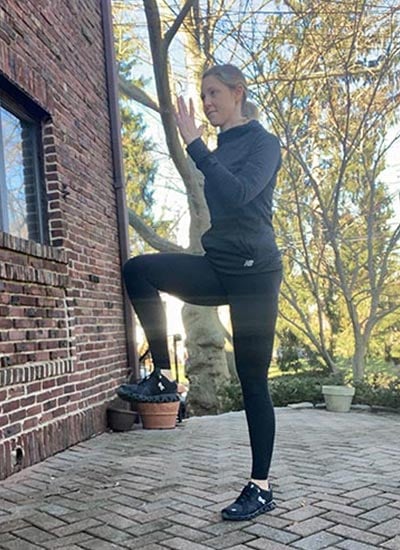
2. Plank walking climbers. In a raised plank position with your arms extended, slowly bend one knee and drive it toward your chest, then extend your leg back behind you. Alternate sides in a slow climb, keeping your shoulders over your wrists and core tight. This low-impact exercise helps work your core.
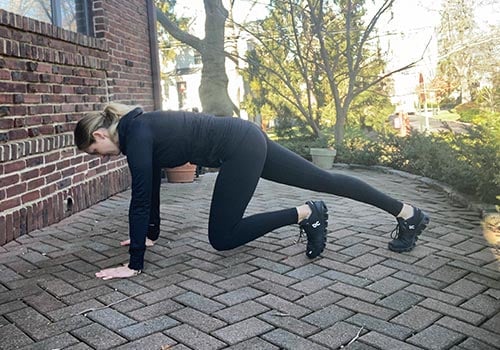
3. Squats. Everyone’s favorite, squats use many different muscles to increase heart rate and burn calories. Make sure to bring your thighs parallel to the floor, like in the image below.
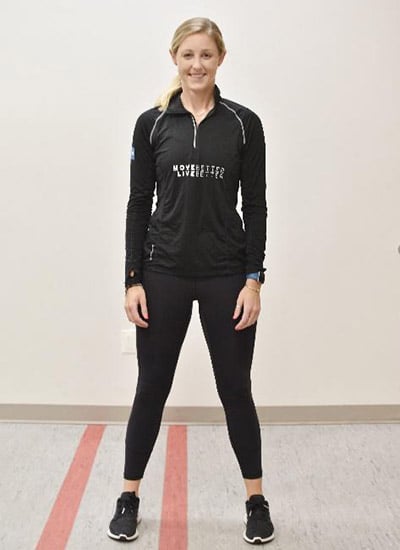
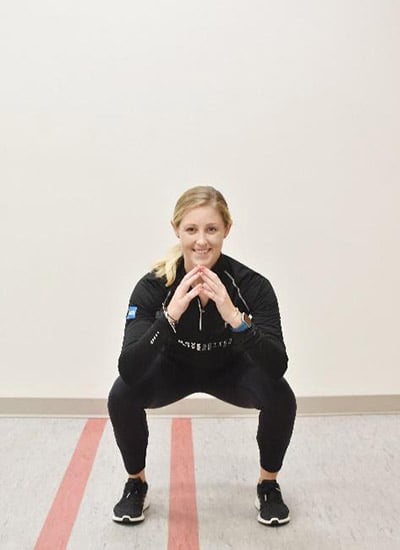
4. Rest. A short break will reinvigorate you for the next round.
Group B
Do each exercise for 20 seconds. Repeat the entire sequence three times before moving on to Group C.
1. Standing alternating butt kicks. This is exactly what it sounds like: Kick one foot at a time behind you toward your butt—like running in place, in reverse. This move helps activate and strengthen your hamstrings.
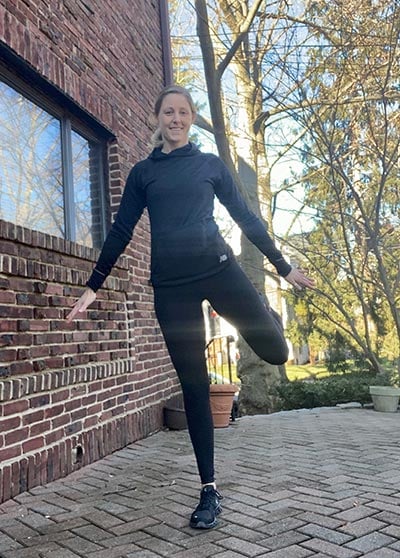
2. Plank marches. In a plank position, slowly raise one leg, then return to start and raise the other leg, as shown below. This exercise works your core, hips, glutes and legs at the same time.
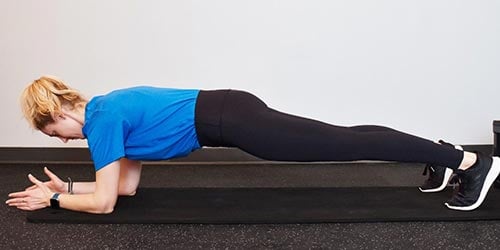
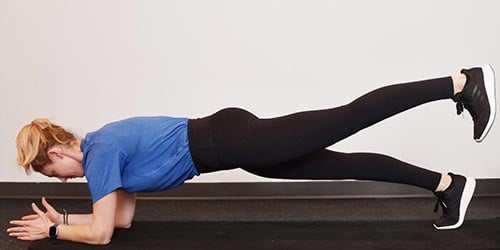
3. Sumo squats. These squats are done in a slightly wider position than a regular squat, with your feet turned out. It targets your inner thighs and glutes and helps with hip mobility.
4. Rest.
Group C
Do each exercise for 20 seconds. Repeat the entire sequence three times.
1. Running man single leg deadlift. Start this exercise by standing on one leg. Extend the other leg behind you and that same arm out in front of you, extending the toes and hands on that side as far apart as possible. Then stand up using your glute muscle on your standing leg, as if you were running. Perform three reps on each side and switch until you hit 20 seconds total. This exercise helps strengthen your glutes, core, balance and coordination.
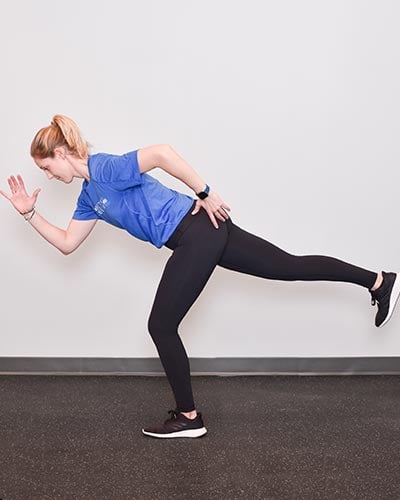
2. Shoulder taps. In a plank position, lift one arm and tap your opposite shoulder, repeating on the other side. Keep your hips still so that you don’t dip from side to side. These exercises help strengthen your core and stabilize your spine while giving your arms a workout.
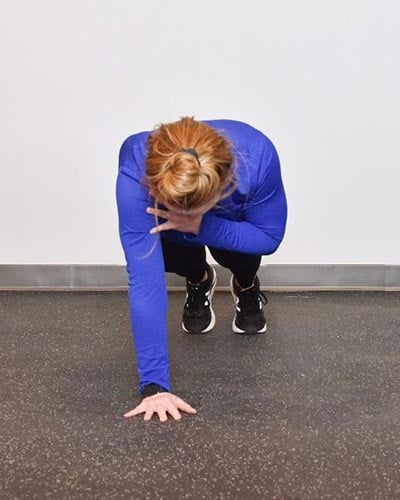
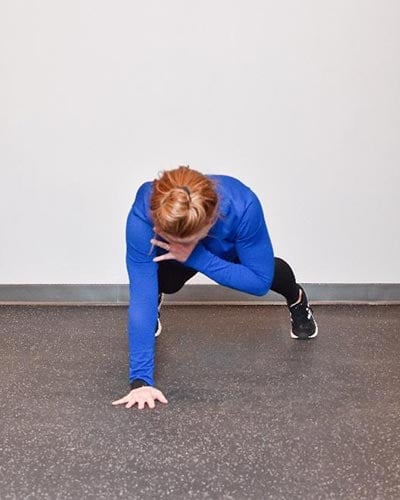
3. Alternating reverse lunges. Reverse lunges help work all of your leg muscles, while protecting your knees. Start with your feet together, step one foot back behind you until both knees are at a 90-degree angle, then step forward to stand. Repeat on the other side.
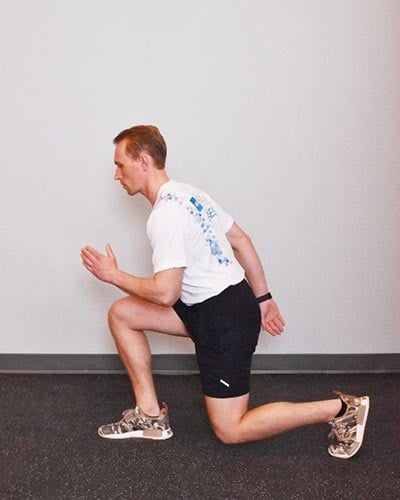
4. Rest.
Final Round
To complete the 20-minute session, perform all exercises from A, B and C straight through. Do each exercise for 20 seconds, followed by a 10-second rest.
Workout #2 — Strengthen and Tone (20 minutes)
For this workout, you can use your body weight or small dumbbells. If you don’t have dumbbells, you can substitute cans of soup, bottles of water or bags of rice.
This routine has six different exercises, which you can perform three times each to build a full 20-minute workout. Do each exercise for 40 seconds, followed by 20 seconds of rest while you get your body into position for the next one.
Start and finish your session with a 45-second plank.
1. Squat with reach or squat press (with or without weights). From a squat position, raise up onto your toes and bring your arms straight above your head, like below. Adding arm movements to squats increases heart rate and helps to strengthen your arms and shoulders.
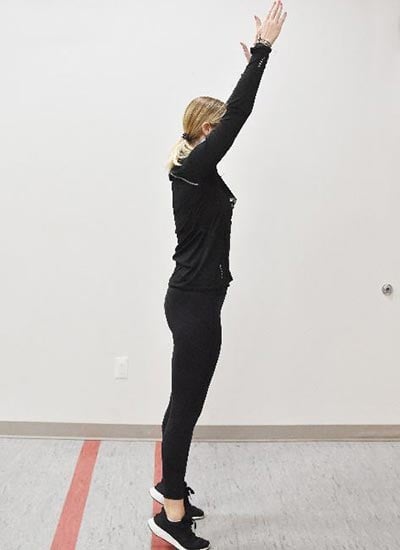

2. Alternating reverse lunges. Reverse lunges help work all of your leg muscles, while protecting your knees. Start with your feet together, step one foot back behind you until both knees are in a 90-degree angle, then step forward to stand. Repeat on the other side.

3. Shoulder taps or plank rows (with or without weights): For shoulder taps, get into a plank position and tap each shoulder using the opposite arm (first photo below). For plank rows, pull one arm up toward your body until your elbow forms a 90-degree angle, then switch sides (second photo below). These exercises help you to strengthen your core to stabilize your spine while giving your arms a workout.


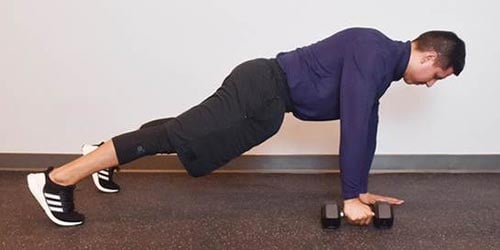
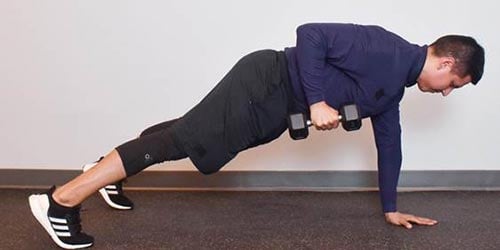
4. Lateral lunges. In addition to powering the same muscle groups worked by reverse lunges, this exercise strengthens your inner thighs and outer glutes. Start with your feet together, step out to one side into a lunge, then return feet together, alternating sides (shown below).
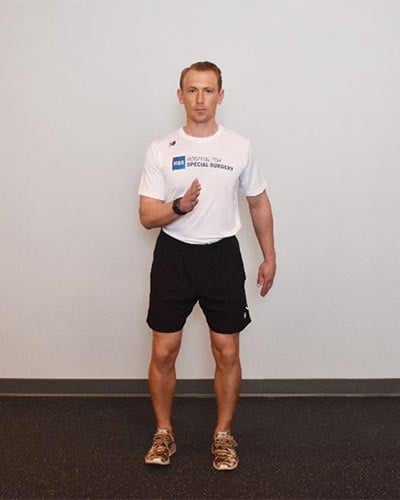
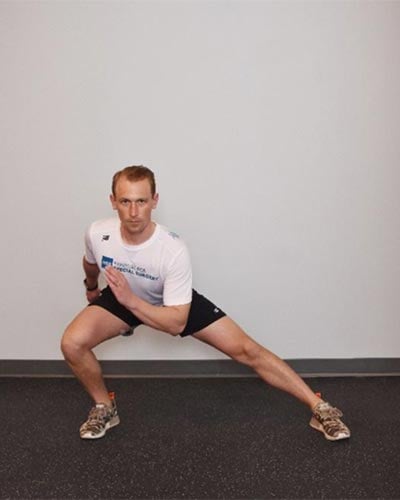
5. Dying bugs. Lie on your back with your arms extended above you and your knees raised at a 90-degree angle. Lower one arm over your head and the opposite leg down to the floor, then switch. This exercise is effective for stabilizing and strengthening your core and can also help improve your posture and relieve pain in your lower back.
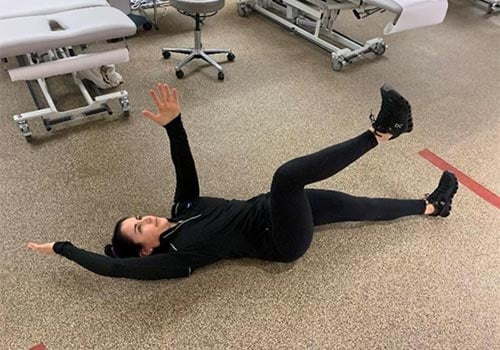

6. Push-ups. Push-ups are a classic exercise for building upper-body and core strength.

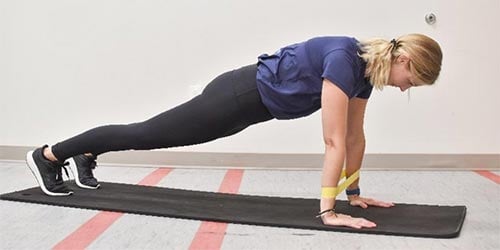
Workout #3 — Strength + Stretch (16.5 minutes)
The strength portion of this routine uses movement combined with your own body weight to loosen up muscles and joints. The stretch portion not only helps improve your flexibility but also is great for stress relief.
Strength Portion (10 minutes)
Do each exercise for 30 seconds followed by 10 seconds of rest. Go through the entire routine three times.
1. Bridges. Lie on your back and bend your knees with your feet flat on the floor. Raise your hips so that they are in line with your upper body, hold, then lower (shown below). This exercise helps increase strength and mobility in your hips and core. It’s safe for people who have hip or knee problems.
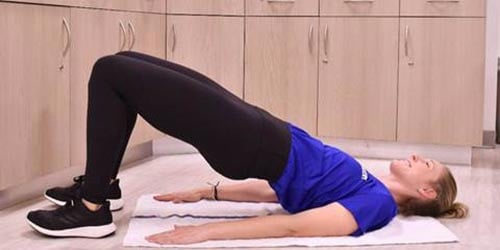
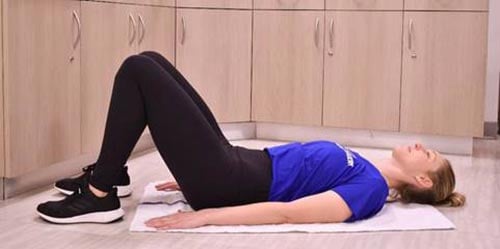
2. Squat with reach. From a squat position, raise up onto your toes and bring your arms straight above your head, like below. Adding arm movements to squats increases heart rate and helps to strengthen your arms and shoulders.


3. Alternating forward lunges. Start with your feet together, then step forward with one leg until both knees are at a 90-degree angle. Push back off your front leg to return to standing, then switch to the other side. Lunges are great coordinated moves to help increase strength in your core and lower body.

4. Side plank. Lie on your side with your legs stacked and your elbow underneath your shoulder. Raise your top arm, then lift your body off the ground to raise your hips. For each repetition, hold the side plank for 30 seconds on each side. (The pictures show a modified, knee-down side plank and a full side plank.)
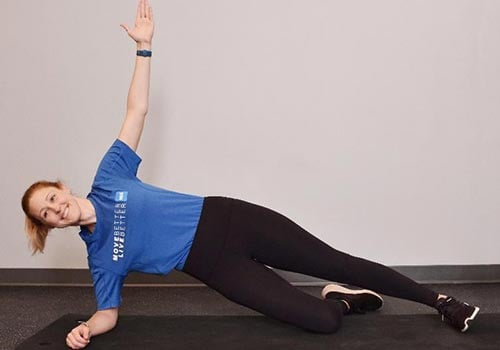

Stretch Portion (6.5 minutes)
Perform stretches while breathing in through your nose and out through your mouth. With each exhale, push further into your stretch. A little bit of discomfort with deep stretching is OK, but pain is not.
Hold each stretch for 30 seconds on each side.
1. Standing calf stretch. Stand tall in front of a wall and place one foot facing up on the bottom of the wall with your leg straight. This helps to stretch your calf and prevent injury to the muscles that support your ankle.

2. Half-kneeling hip flexor stretch and sit-back hamstring stretch. These stretches are great for your legs and hips. Perform these two together on one side before moving to the other side. For the hip flexor stretch, squeeze your glute on your kneeling leg; you should feel a stretch in the front of your hips. Come up onto the toes of your back foot if needed to feel it in your quad. For the hamstring stretch, begin with a bent knee and slowly straighten it as you sit your hips back. Only go as far as is comfortable.

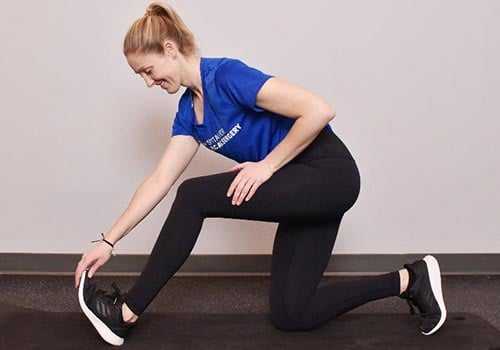
3. Supine figure 4. Lie on your back with both knees bent and feet on the floor. Place one foot on the opposite thigh, then place your hands behind that leg. Pull the leg toward you until you feel a stretch in the bent leg. This stretch targets your hips, glutes and lower back.
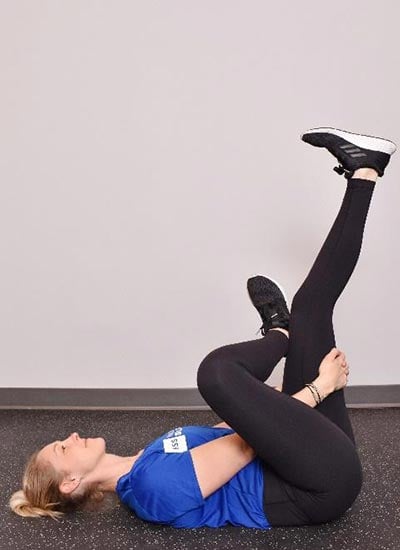
4. 90/90 peel. This move helps improve mobility in your thoracic spine and outer glute and stretches your Iliotibial (IT) band. Start by lying on your side with your bottom leg extended, your top leg on a foam roller and your arms stacked. Keep your top leg on the roller while you open your top shoulder and arm toward the ground. Make sure to breathe while opening the chest, then return back to the start.
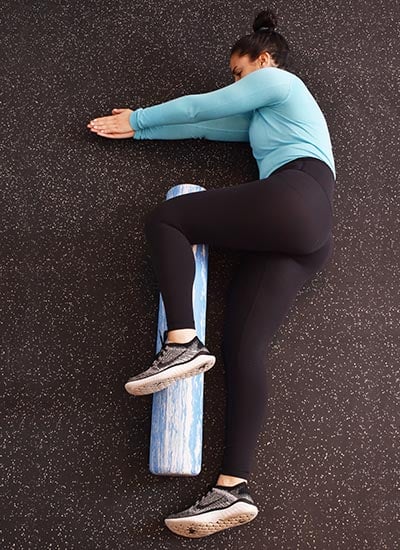
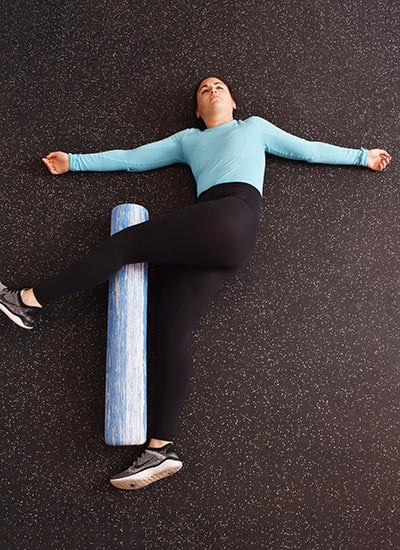
5. Child's pose. A classic yoga position, child’s pose is a good stretch for the hips and the entire back. Start on your hands and knees, then bring your hips back toward your heels and round your back (shown below). Perform this stretch with your arms first angled to one side and then to the other to really stretch out your sides.

6. Cat/cow. This stretch helps relieve tension in your spine and neck, which is especially important if you’re spending a lot of time at your desk. On your hands and knees, take a breath and round your back upward. When you exhale, arch your back and raise your head.
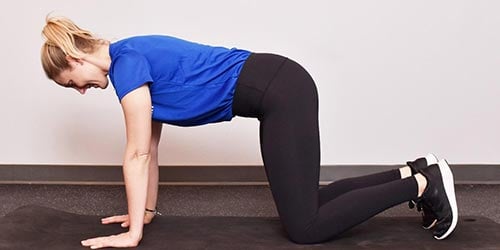
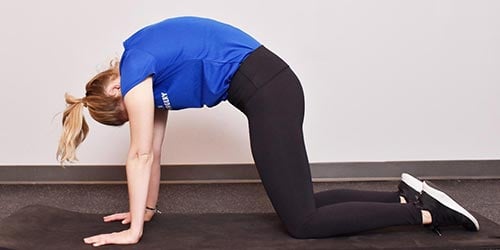

Published 1/11/2021


